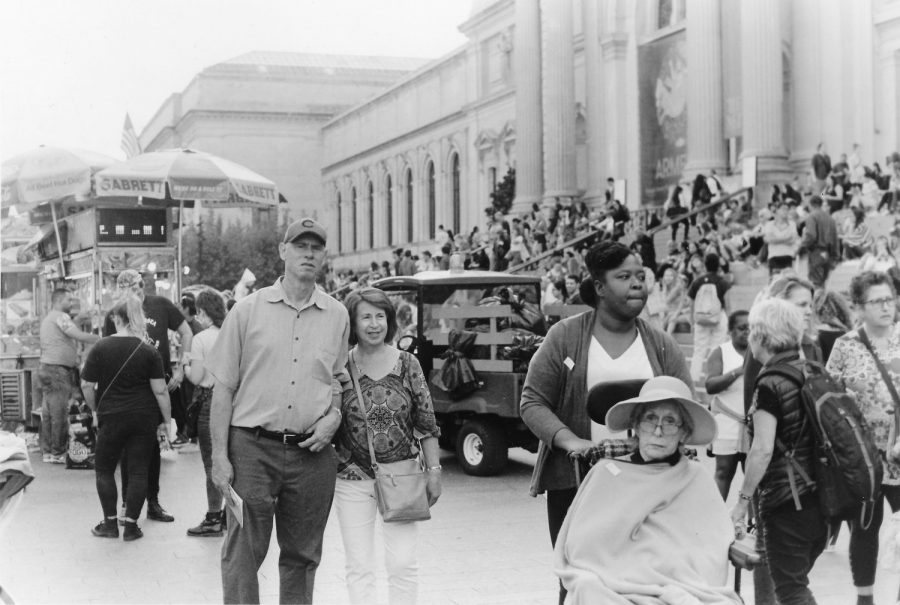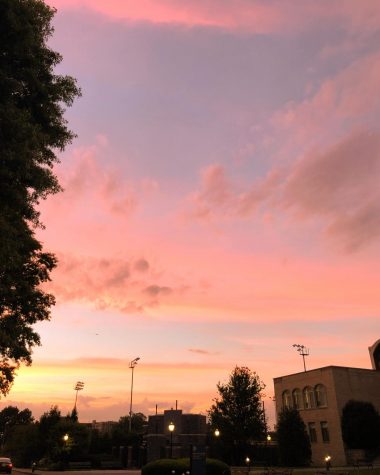iPhones Work Hard But Photographers Work Harder
Phones have changed the nature of photography yet the manual process of making prints still has its merits. (Julia Comerford | The Ram)
May 1, 2019
By Julia Comerford
The first photograph was made in 1816 by Nicéphore Niépce using a camera obscura and a process that took several days. Today, you do not have to be a chemist and skilled inventor to take thousands of photographs in that same period of time and in much better quality (with your iPhone XR).
As the Photo Editor of The Ram for its past three volumes, I want everyone to know the importance and impact photography has on society. Photography, its process, meaning and the moments it captures have evolved along with society without always being noticed.
I used the word “make” to describe photographs created in the beginning stages of photography and “take” to describe photographs created in the present day. In the 1800s and the years before iPhones, photographs were made by hand.
Photographers manually put film in a camera and developed it in a dark room. They would then dry the film and proceed to make prints using a separate developing process.
Photographers and photojournalists everywhere would use massive enlarger machines, light exposure, chemicals and many hours in a low-lit dark room just to make a few photographs.
I know the struggle of this process because I have done it myself. The many grueling hours spent in a dark room manually making a photograph by trial and error are worth it for the result of a beautiful handmade photograph.
Because of this long process of making a photograph, photographers before iPhones clicked their camera buttons with caution. They did not take many photographs in order to conserve film and time.
Each photograph was thought out carefully and was perfectly made to capture a precise moment in time that was rich in meaning. This is what made these photographs so meaningful.
Flash forward to the iPhone years: the manual photography process is extinct, and you do not have to have one piece of knowledge about photography and its process to make a photograph.
Everyone and anyone can be a “photographer” because all you need is an iPhone. You will not find people spending several minutes formulating how they will take a great photograph because they only have one or two more shots to do it.
When your mom is taking a photograph of you heading to your senior prom, she is most certainly not just taking one photograph. She will take hundreds, if not thousands, of the same photograph with not even a click but a tap of a virtual button with ease.
She will most likely not make a physical print of the photograph and simply post it on Facebook amongst millions of photographs that float around lost in the Internet.
Does the ease of being able to make hundreds of photographs today with such thoughtless effort cause the meaning and substance of photographs to be lost? What does all of this mean for the future of photographs?
The answer to this is up to us: the present society. The next time you take a photograph, pretend you are Nicéphore Niépce for a moment.
Pause and think about the moment you are about to capture and what it means to you. Take the time to make a physical print of that moment because it will be something that you will have forever and its meaning will never be lost.










If you want a picture to show with your comment, go get a gravatar.